Experience Tiananmen Square: A Deep Dive into Its Architectural Complex and Historical Impact
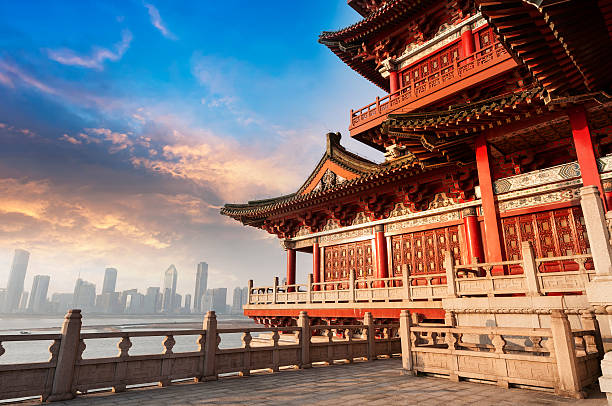
An Essential Guide to Visiting Tiananmen_Square_Architectural_Complex
Nestled in the vibrant heart of Beijing, Tiananmen Square stands as a profound testament to China’s rich history and its evolving political landscape. Spanning over 440,000 square meters, this monumental space is not just a square; it is a historical canvas painted with the strokes of revolution, national pride, and collective memory. Flanked by grand Soviet-style structures and ancient gateways that once welcomed emperors, Tiananmen Square is the site where a nation declared its identity and aspirations.
As you enter this iconic square, you are greeted by the imposing Gate of Heavenly Peace, adorned with the iconic portrait of Mao Zedong, a symbol of the Communist Party’s enduring legacy. This is a place where the echoes of the past resonate deeply, from the founding of the People’s Republic of China in 1949 to the poignant memories of the pro-democracy protests of 1989. Despite the weight of its history, Tiananmen Square remains a dynamic public space, bustling with visitors, local citizens, and ceremonial activities.
Whether you are drawn to its striking architecture, the daily flag-raising ceremonies, or the profound narratives woven into its very fabric, a visit to Tiananmen Square is more than just a sightseeing stop—it’s an opportunity to engage with the heart of China itself. Prepare to explore the surrounding architectural wonders, including the National Museum of China, the Chairman Mao Memorial Hall, and the Great Hall of the People, each offering a unique glimpse into the nation’s storied past. As you navigate through this historic complex, you’ll discover that Tiananmen Square is not only a symbol of national identity but also a space for reflection, remembrance, and an invitation to understand the complexities of modern China.
In This Guide
- An Essential Guide to Visiting Tiananmen_Square_Architectural_Complex
- The Rich History and Legends of Tiananmen_Square_Architectural_Complex
- Main Highlights: What You Absolutely Can’t Miss
- Planning Your Visit: A Practical Guide
- Tickets: Prices, Booking, and Tips
- How to Get There: A Complete Transportation Guide
- Local Cuisine and Accommodation Nearby
- Frequently Asked Questions
- Final Thoughts on Your Trip
The Rich History and Legends of Tiananmen_Square_Architectural_Complex
Tiananmen Square stands as a monumental testament to China’s rich history, embodying both the triumphs and tribulations of the nation. This vast expanse, nestled in the heart of Beijing, has witnessed centuries of events that have shaped the very fabric of modern China.
The square derives its name from the Gate of Heavenly Peace, or Tiananmen, which was erected in 1417 as the southern entrance to the Forbidden City. The square itself was laid out in the 1650s, serving as a gathering place for significant ceremonies and events. Over the years, it has been the backdrop for major historical occurrences, from the foreign invasions during the Second Opium War to the Boxer Rebellion, where it was occupied by various armies.
A significant transformation occurred in the 1950s when the square was dramatically expanded following Mao Zedong’s proclamation of the People’s Republic of China on October 1, 1949. This moment marked the birth of a new era for China, and the square was reimagined to reflect the Communist Party’s vision. Monuments dedicated to statehood and revolution sprang up, including the iconic Monument to the People’s Heroes and the Chairman Mao Memorial Hall, which houses the embalmed body of Mao Zedong himself.
Tiananmen Square is perhaps most poignantly remembered for the events of June 3-4, 1989, when a pro-democracy protest was met with a violent government crackdown. This tragic episode remains a sensitive subject within China, often unacknowledged in public discourse, especially among younger generations. Yet, it underscores the square’s role as a stage for both celebration and dissent.
In its current form, Tiananmen Square is a place of solemn reflection and national pride. Every day, the flag-raising ceremony draws early risers who gather to witness the precise movements of the People’s Liberation Army soldiers. The square is not merely a tourist attraction; it is a living monument to the struggles and aspirations of the Chinese people.
As you stroll through this architectural complex, you will encounter a blend of Soviet-style structures and traditional Chinese elements. The impressive Gate of Heavenly Peace looms large, adorned with Mao’s portrait, while the Great Hall of the People and the National Museum of China flank the square, inviting exploration of their own historic narratives.
Visiting Tiananmen Square is more than just a sightseeing endeavor; it is an immersion into the heart of China’s collective memory. Whether you are standing beneath the watchful gaze of Mao or marveling at the towering monuments that tell tales of sacrifice and resilience, the square invites you to reflect on the past while considering the future of this ancient civilization.
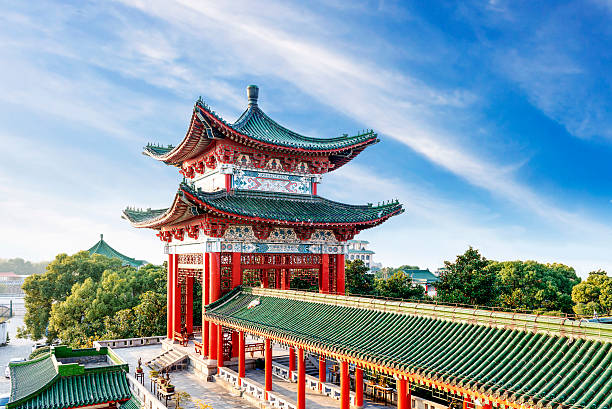
Tiananmen_Square_Architectural_Complex.
Main Highlights: What You Absolutely Can’t Miss
Tiananmen Square, a monumental expanse in the heart of Beijing, is not just the world’s largest public square but also a historical epicenter that tells the story of China’s tumultuous past and its aspirations for the future. As you explore this iconic site, here are the main highlights you absolutely can’t miss:
The Gate of Heavenly Peace (天安门)
At the northern edge of the square, the Gate of Heavenly Peace stands as a powerful symbol of China. Adorned with a massive portrait of Mao Zedong, this double-tiered structure was once the main entrance to the Forbidden City. It was here that Mao proclaimed the founding of the People’s Republic of China in 1949. Visitors can gain access to the upper levels for stunning views over the square, but be sure to book your ticket in advance via WeChat as they sell out quickly.
Chairman Mao Memorial Hall (毛主席纪念堂)
Located in the center of the square, this mausoleum houses the embalmed body of Mao Zedong, making it a significant stop for many who wish to pay their respects. Visitors can view Mao’s body inside a glass coffin draped in a red flag. Note that reservations are required, and the hall is open only in the mornings. Be prepared for long queues as you navigate the security checks.
Monument to the People’s Heroes (人民英雄纪念碑)
This towering obelisk, erected in 1959, commemorates those who sacrificed their lives during the revolutionary struggles of China. The monument is surrounded by sculptures depicting heroic figures, making it a poignant reminder of the country’s tumultuous history. Take a moment to reflect and snap some photos in front of this inspiring structure.
National Museum of China (中国国家博物馆)
Situated on the eastern side of Tiananmen Square, this museum is a treasure trove of Chinese history and culture. With extensive collections that cover over 5,000 years of civilization, highlights include the jade burial suit from the Han dynasty and exquisite bronze artifacts. Make sure to reserve your free ticket in advance, as the museum is a popular destination, often requiring a second security check.
Great Hall of the People (人民大会堂)
On the western side of the square lies this imposing building, where the National People’s Congress convenes. Constructed in 1959, it features grand architecture and an impressive auditorium that seats 10,000 people. While access for tourists is limited, it’s worth visiting to admire the exterior and the symbolism of the structure as a seat of power.
Zhengyang Gate (正阳门)
At the southern end of Tiananmen Square, Zhengyang Gate, also known as Qianmen, is a well-preserved ancient structure that dates back to the Ming dynasty. Originally built to protect the southern entrance to the Inner City, it offers a glimpse into Beijing’s historical defenses and architectural grandeur.
Daily Flag-Raising and Lowering Ceremonies
One of the most stirring experiences at Tiananmen Square is witnessing the daily flag-raising ceremony at sunrise. Performed by a troop of soldiers from the People’s Liberation Army, the precision of the ceremony is a spectacle in itself. The flag is lowered in the evening, providing another opportunity to witness this important national ritual.
A Stroll Through History
As you walk around Tiananmen Square, take in the impressive Soviet-inspired architecture and the lines of red flags that flutter in the wind. The square serves not just as a memorial to the past but also as a vibrant space for civic engagement and national pride.
Tips for Your Visit
- Plan Ahead: Reserve your tickets via WeChat for the Mao Memorial Hall, the National Museum, and the Gate of Heavenly Peace to avoid disappointment.
- Best Time to Visit: Early mornings are ideal for enjoying the flag-raising ceremony and cooler weather during the spring and fall.
- Security Checks: Be prepared for thorough security screenings at all entry points, and keep your passport handy.
Tiananmen Square is more than a collection of monuments; it’s a profound space that invites reflection on the complexities of Chinese history and the ongoing narrative of its people. Make sure to take your time, absorb the atmosphere, and appreciate the deep-rooted significance of this remarkable site.
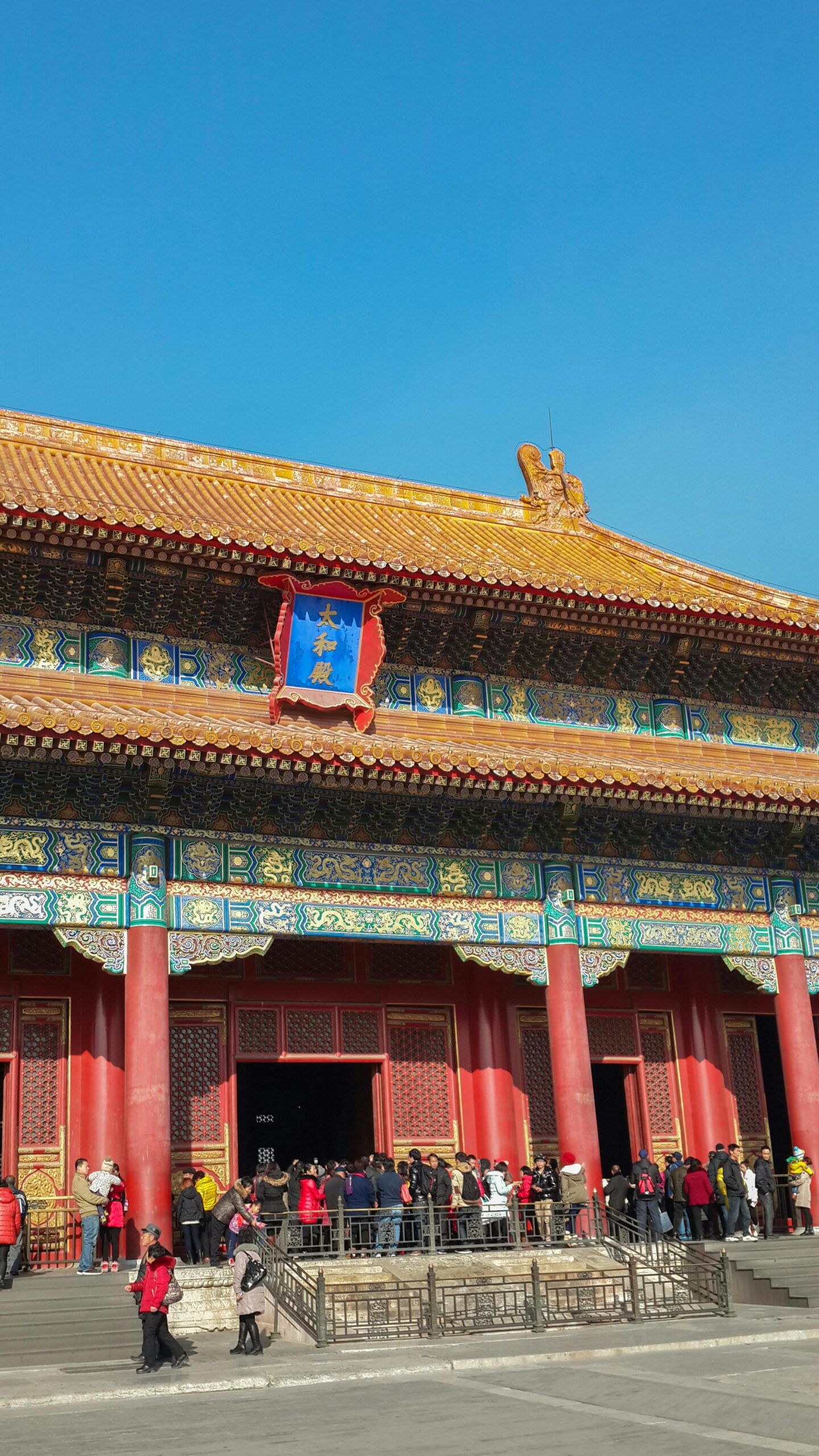
Tiananmen_Square_Architectural_Complex.
Planning Your Visit: A Practical Guide
Visiting Tiananmen Square is an immersive experience that transcends mere sightseeing, offering a deep dive into China’s complex history and cultural identity. This practical guide will help you navigate this iconic site with ease, ensuring a memorable visit.
Getting There
Location: Tiananmen Square is centrally located in Beijing, making it easily accessible via public transport. The two main subway stations nearby are:
- Tiananmen East (Line 1)
- Qianmen (Line 2)
Both stations provide direct access to the square, but remember to arrive early to avoid long queues at security checkpoints.
Entry Requirements
Reservations and Security: Entrance to Tiananmen Square is free, but you must reserve a ticket in advance through the WeChat app (only available in Chinese). Assistance from a local or your hotel may be beneficial for this process. Expect to undergo security checks, where you will need to show your passport multiple times.
Time Slots: The reserved ticket grants access during a specific time slot. Plan to arrive early in the morning for the flag-raising ceremony or in the evening to witness the flag-lowering ceremony against the backdrop of illuminated monuments.
Best Time to Visit
The optimal months for visiting are spring (April to May) and fall (September to October), when temperatures are mild and pleasant. Summer can be hot and humid, while winter temperatures can drop significantly, making exploration less enjoyable.
Duration of Visit
Plan to spend at least half a day at Tiananmen Square to fully appreciate its monuments and museums. If you intend to visit the adjacent Forbidden City, allocate an additional half day. Note that once you enter the Forbidden City, you cannot return to Tiananmen Square, so consider visiting the square in the morning and the Forbidden City in the afternoon.
Must-See Attractions
-
Chairman Mao Memorial Hall: Home to Mao Zedong’s embalmed body, this is a significant site for many visitors. Entry requires an advance reservation via WeChat, and it is open daily from 8 am to noon, except Mondays.
-
National Museum of China: Recognized as one of Beijing’s best museums, it houses extensive collections showcasing Chinese history and culture. Admission is free but requires a reservation via WeChat.
-
Gate of Heavenly Peace: The iconic gate at the northern end of the square is famous for its portrait of Mao Zedong. Consider climbing to the upper levels for stunning views of the square, but tickets sell out quickly.
-
Monument to the People’s Heroes: This towering obelisk commemorates those who sacrificed their lives for China. It stands as a potent symbol of national pride.
-
Great Hall of the People: The site of significant government proceedings, this monumental building is worth viewing from the outside, though entry is limited.
-
Zhengyang Gate: Situated at the southern end of the square, this historical gate dates back to the Ming Dynasty and offers a glimpse into Beijing’s architectural heritage.
Food and Drink
While there are a few simple cafeterias near the southeastern corner of the square, options are limited. Consider dining at the National Museum’s café or exploring local eateries afterward. The Oriental Plaza mall, just a subway stop away, boasts a food court with a variety of options, including noodles and hotpots.
Tips for a Smooth Visit
- Be Early: Arriving before the crowds will enhance your experience, especially for the flag-raising ceremony.
- Dress Comfortably: Wear comfortable shoes as there will be plenty of walking and standing.
- Stay Hydrated: Bring water with you, especially during warmer months, but be prepared to dispose of it before entering the security checks.
- Respect Local Customs: Tiananmen Square is a site of national significance; maintain a respectful demeanor, especially near memorials and during ceremonies.
With these tips in mind, your visit to Tiananmen Square promises to be an enlightening experience, connecting you with the historical and cultural fabric of China. Enjoy your exploration of this monumental site!
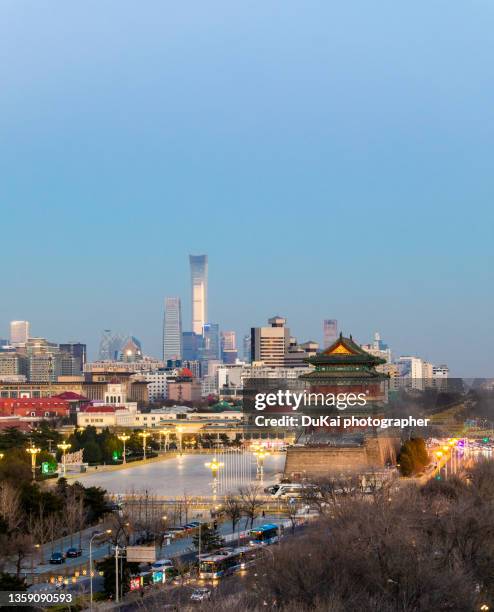
Tiananmen_Square_Architectural_Complex.
Tickets: Prices, Booking, and Tips
Visiting the Tiananmen Square Architectural Complex is a profound experience that combines history, culture, and national identity. Here’s everything you need to know about securing your entry, understanding the costs, and navigating the booking process.
Ticket Information
Entry to Tiananmen Square:
Access to Tiananmen Square itself is free, but you must reserve a ticket in advance. This reservation process is done through a mini-program on the WeChat app, which is currently only available in Chinese. If you are not familiar with the language, it’s advisable to seek assistance from someone who can help you make the booking.
Visiting the Surrounding Attractions:
While entry to Tiananmen Square is complimentary, tickets are required for the various sites around the square, such as the National Museum of China and the Chairman Mao Memorial Hall. Like the square, these tickets must also be reserved through WeChat, and your passport will be needed for verification at the entrance.
Booking Tips
-
Plan Ahead:
Reservations for both the square and its surrounding attractions can fill up quickly, especially during peak tourist seasons. Aim to book your tickets as far in advance as possible to secure your desired time slots. -
Be Patient with Security:
Expect to encounter rigorous security checks upon your arrival. Be prepared to show your passport multiple times. Arriving early can help you avoid long queues and give you more time to explore. -
Choose Your Timing Wisely:
Consider visiting during the early morning to catch the flag-raising ceremony, or in the evening for the flag-lowering ceremony and the illuminated monuments. If you plan to explore the Forbidden City afterward, make sure to visit Tiananmen Square first, as you cannot re-enter the square once you leave for the Forbidden City. -
Utilize Local Help:
If you’re struggling with the WeChat app, many hotels and locals can provide assistance with the reservation process. Engaging with local guides or concierges can also enhance your experience. -
Understand Admission Links:
Note that your admission to the various attractions is linked to your passport, not a physical or digital ticket. Make sure to have your passport on hand as you visit each site.
Conclusion
Experiencing Tiananmen Square and its architectural complex is a journey into the heart of China’s history and identity. By planning ahead and understanding the ticketing process, you can ensure a smooth and enriching visit to this iconic location. Prepare for a day filled with awe and reflection as you walk through the square that has witnessed some of the most significant events in modern Chinese history.
How to Get There: A Complete Transportation Guide
Reaching Tiananmen Square, one of Beijing’s most iconic landmarks, is straightforward, thanks to the city’s efficient transportation system. Whether you’re coming from the airport, nearby hotels, or other attractions, here’s how to navigate your way to this historic site.
Arriving by Subway
Beijing Subway
The Beijing Subway is the most convenient way to get to Tiananmen Square. There are two main subway stations with direct access to the square:
- Tiananmen East Station (天安门东站)
- Line: 1 (light blue line)
-
Exit: Follow the signs to the exit, and you’ll find yourself at the eastern entrance of Tiananmen Square.
-
Qianmen Station (前门站)
- Line: 2 (red line)
- Exit: This station leads you to the southern end of the square, close to the Zhengyang Gate.
Tips for Subway Travel:
– Purchase a single-use ticket or use a rechargeable Beijing Transportation Smart Card to make your journey smoother.
– Expect the subway to be busy, especially during rush hours; traveling after 9 AM can provide a more comfortable experience.
Getting There by Bus
Beijing’s extensive bus network also serves Tiananmen Square. Look for routes that stop at the square or its vicinity, such as:
- Bus Lines: 1, 10, 22, 52, 120, and 126
- Bus Stops: Alight at Tiananmen Square East or Qianmen.
Note: Buses may be less convenient than the subway, particularly for first-time visitors, due to potential language barriers and the need to navigate the local bus schedules.
Arriving by Taxi or Ride-Hailing Services
If you prefer door-to-door service, taxis and ride-hailing apps like Didi Chuxing are readily available in Beijing.
- Taxi: Simply tell the driver “Tiananmen Guangchang” (天安门广场) to reach the square directly.
- Cost: Taxi fares in Beijing are relatively inexpensive, but be aware of potential traffic, especially during peak hours.
Ride-Hailing: Use popular Chinese apps like Didi to book a ride, but keep in mind you may need help with app navigation if you’re not proficient in Chinese.
From Beijing Capital International Airport
If you’re arriving at Beijing Capital International Airport (PEK), you have several options to get to Tiananmen Square:
- Airport Express Train: Take the Airport Express to Dongzhimen Station, then transfer to Subway Line 2 towards Xuanwumen and switch to Line 1 to reach Tiananmen East Station.
- Taxi: Taxis from the airport to the square take approximately 30-60 minutes depending on traffic. Expect to pay around CNY 100-200 (USD 15-30).
Final Steps
Upon arrival at Tiananmen Square, remember that security checks are mandatory. You will need to show your passport and pass through screening before entering. Reservations for visiting specific sites around the square, such as the Chairman Mao Memorial Hall and the National Museum, should be made in advance via WeChat.
In Summary
Getting to Tiananmen Square is simple, whether you choose the subway, bus, taxi, or ride-hailing service. Each method has its advantages, but the subway is often the quickest and most efficient option. Prepare for security checks and be sure to enjoy the stunning architecture and rich history that awaits you at this pivotal site in China’s capital.
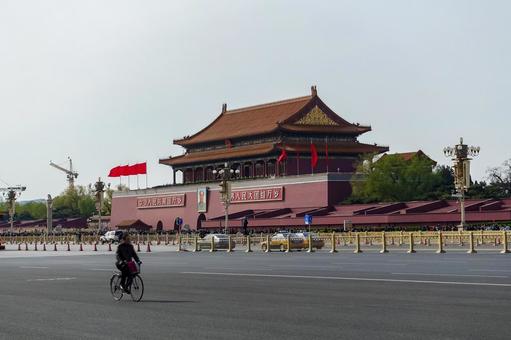
Tiananmen_Square_Architectural_Complex.
Local Cuisine and Accommodation Nearby
When visiting the iconic Tiananmen Square Architectural Complex, your experience can be enriched by sampling some of Beijing’s local cuisine and finding comfortable accommodation nearby. Here’s a guide to help you navigate the gastronomic and lodging options in this historic area.
Culinary Delights
While restaurants within the square are limited, you’ll find a few convenient options nearby:
-
National Museum of China Café: If you’re planning to explore the museum, the café here offers a decent selection of light meals and snacks. It’s a great spot to refuel after absorbing the vast historical exhibits.
-
Food Court at Oriental Plaza: Just a subway stop away at Wangfujing Station, this sprawling shopping mall features a vibrant food court where you can savor a variety of dishes. From steaming bowls of Beijing noodles to the ever-popular hotpot, you’ll find local flavors that cater to every palate.
-
Donghuamen Night Market: For those seeking a more adventurous culinary experience, head to this bustling market located within walking distance. Here, you can sample an array of street foods, including skewered meats, dumplings, and even some exotic delicacies. It’s a lively atmosphere that captures the essence of Beijing’s street food scene.
-
Quanjude Roast Duck: If you’re in the mood for a classic Beijing dish, don’t miss Quanjude, famous for its succulent Peking duck. Located a short distance from Tiananmen Square, this restaurant offers a traditional dining experience, complete with expertly carved duck and delicious side dishes.
Comfortable Stays
Finding a comfortable place to stay near Tiananmen Square is key to enjoying your visit. Here are some recommendations:
-
The Beijing Hotel NUO: Situated just a short walk from Tiananmen Square, this luxury hotel combines traditional charm with modern amenities. Enjoy spacious rooms, a range of dining options, and a spa for relaxation after a day of sightseeing.
-
Waldorf Astoria Beijing: For travelers seeking opulence, the Waldorf Astoria offers a lavish experience with stunning accommodations, exceptional dining, and a prime location near the square. Don’t miss the chance to unwind in their beautiful spa.
-
Beijing 161 Wangfujing Hotel: This boutique hotel provides a cozy atmosphere and is located conveniently near the Wangfujing shopping district. It’s a charming option for budget-conscious travelers, with modern amenities and easy access to Tiananmen Square.
-
Qianmen Street Boutique Hotel: Located close to the historical Qianmen area, this hotel offers a unique blend of contemporary design and traditional Chinese elements. It provides easy access to both Tiananmen Square and the Forbidden City, making it an ideal base for exploration.
Conclusion
A visit to Tiananmen Square is not just about the monumental sights; it’s also an opportunity to indulge in Beijing’s rich culinary scene and unwind in comfortable accommodations. Whether you’re enjoying a traditional Peking duck dinner or savoring the lively atmosphere of a night market, your experience in this historic part of the city will surely be unforgettable. Happy travels!
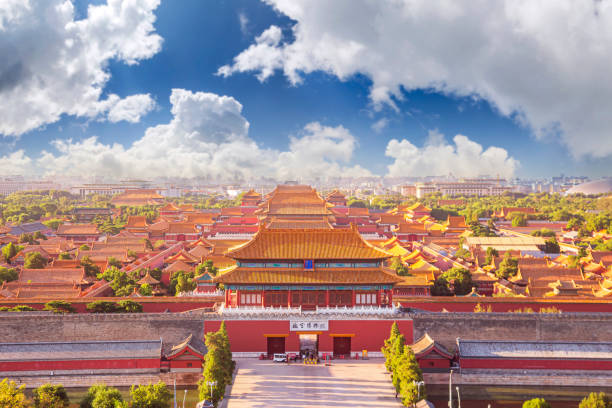
Tiananmen_Square_Architectural_Complex.
Frequently Asked Questions
Frequently Asked Questions
1. Do I need a ticket to enter Tiananmen Square?
Yes, entry to Tiananmen Square is free, but you must reserve a ticket in advance via the WeChat app. The ticket is linked to your passport, so make sure to have it handy when you enter.
2. What are the best times to visit Tiananmen Square?
The square can be visited any time of day, but early mornings are ideal for the flag-raising ceremony. Alternatively, visiting during the afternoon allows for peak sunshine, while evenings offer the flag-lowering ceremony and stunning illuminations of the monuments.
3. How long should I plan to spend at Tiananmen Square?
Allocate at least half a day to fully explore Tiananmen Square and its surrounding attractions. If you plan to visit the adjacent Forbidden City afterward, set aside an additional half day, as you cannot re-enter the square after exiting for the Forbidden City.
4. What can I see and do at Tiananmen Square?
Key attractions include the Chairman Mao Memorial Hall, the National Museum of China, the Gate of Heavenly Peace, and various patriotic monuments. Each site offers a unique glimpse into China’s history and culture, making your visit rich in experience.
5. Are there any dining options within Tiananmen Square?
There are a few simple cafeterias located in the southeastern corner of the square. However, if you have tickets for the National Museum of China, its café offers better options. It’s advisable to bring snacks and enjoy a more substantial meal after exploring.
6. What should I know about security checks?
Expect rigorous security checks upon entering Tiananmen Square. You will need to queue for screening and may have to show your passport multiple times. Be prepared for potential delays, especially during peak visiting hours.
7. How do I get to Tiananmen Square using public transportation?
You can easily access Tiananmen Square via the Beijing subway. The two main entrances are located near the Tiananmen East subway stop (Line 1) and the Qianmen subway stop (Line 2).
8. Can I take photographs in Tiananmen Square?
Yes, photography is generally permitted in Tiananmen Square, and many visitors enjoy taking pictures in front of the iconic Gate of Heavenly Peace and the various monuments. However, be respectful of security personnel and other visitors while capturing your memories.
Final Thoughts on Your Trip
As your journey through the Tiananmen Square Architectural Complex comes to a close, take a moment to reflect on the unique tapestry of history, culture, and human resilience that this iconic location embodies. From the imposing Gate of Heavenly Peace to the solemnity of Chairman Mao Memorial Hall, you’ve walked in the footsteps of generations who have shaped the narrative of modern China.
This vast square is not merely a backdrop for photographs; it serves as a living testament to the nation’s trials and triumphs. The echoes of past protests remind us of the ongoing quest for freedom and identity, while the grandeur of the surrounding monuments reflects a rich and intricate history.
Whether you witnessed the stirring flag-raising ceremony at dawn or marveled at the architectural splendor under the glow of evening lights, Tiananmen Square offers an experience that resonates deeply within every traveler. As you depart, carry with you the stories of this place and the realization that history is not just a series of events; it is a shared journey that continues to unfold. May your travels inspire a greater understanding of the world and its myriad cultures, and may you always seek to discover the stories that lie beneath the surface. Safe travels!